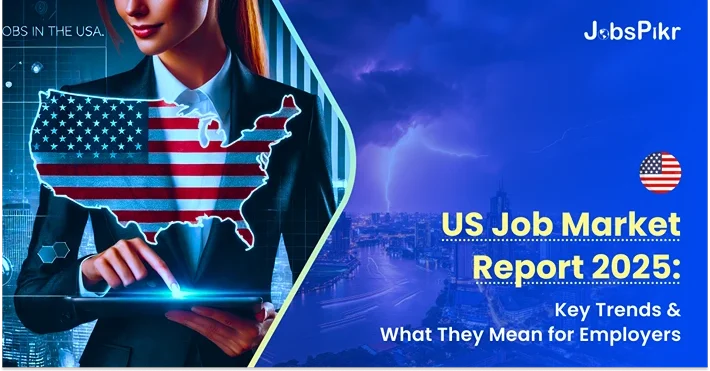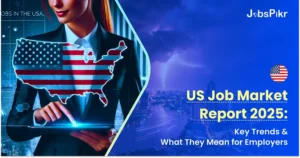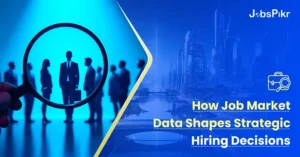The American job market has never been static. It can be compared to a living, breathing entity, shaped by the push and pull of innovation, generational shifts, and the ever-changing desires of workers. As we hit the midpoint of the 2020s, the workplace is undergoing transformations so profound that employers clinging to old playbooks risk being left in the dust. Looking at the 2025 US Job Market Report, there are a few trends shaping the industry, especially since the rise of AI, and some other roles that may become obsolete. Let’s find out.
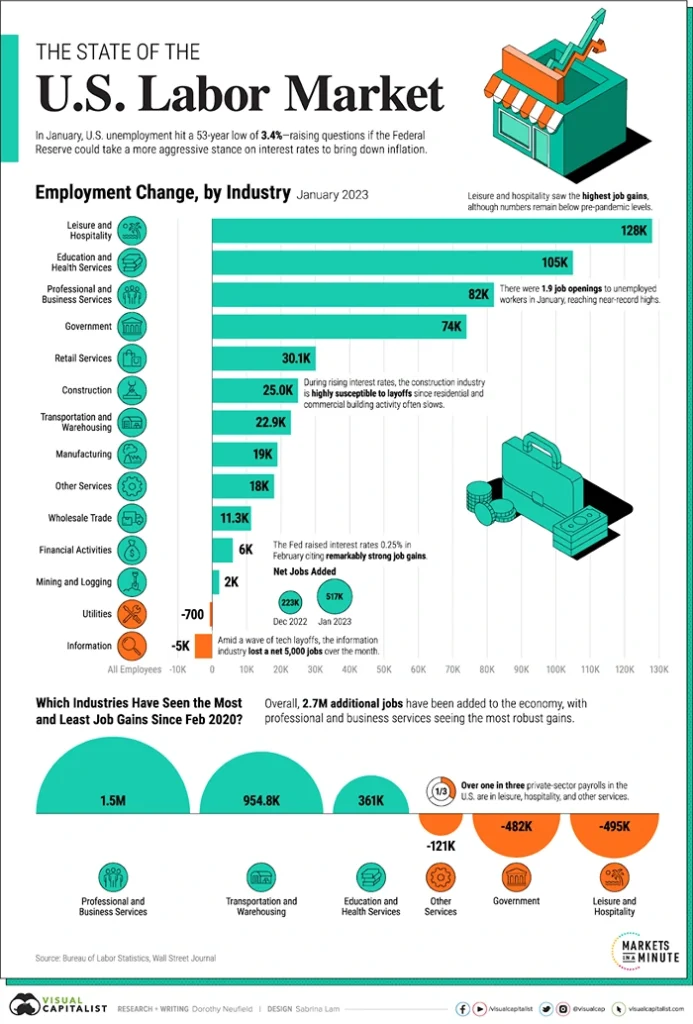
Image Source: Visual Capitalist
US Job Market Report and Trends of 2025
1. Remote Work 2.0: Flexibility or Bust
With the onset of the pandemic in 2020 that forced the world to work remotely, a light bulb went off – why can’t this be the new normal? A lot of businesses since then have adopted a completely remote working environment or a hybrid atmosphere, giving employees the flexibility to work from home and the office. This has changed a few ways talent is hired, too.
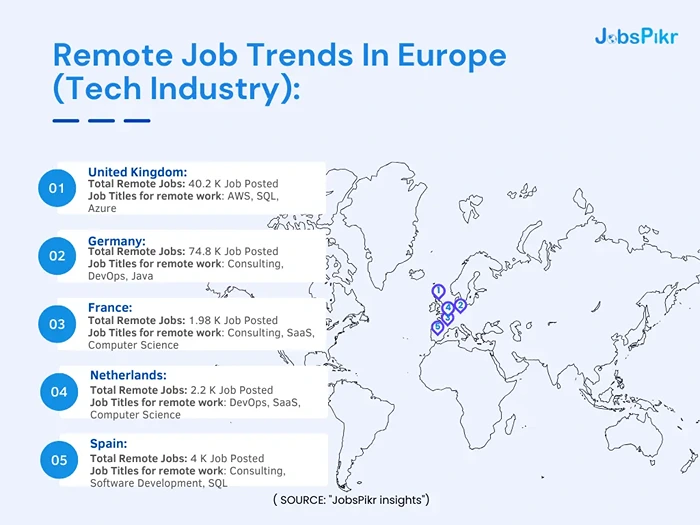
Geography Doesn’t Matter: Why limit your hiring pool to one city? Companies like Buffer and Zapier have ditched headquarters entirely, scooping up talent from small towns and big cities alike. A graphic designer in Boise can now work for a startup in Boston without packing a suitcase.
The Death of the Clock-In Culture: The rigid schedule is dead. Forward-thinking companies are adopting “results-only work environments” (ROWE), where employees are judged by output, not hours logged. Need to take a midday yoga class or pick up the kids? No one’s counting minutes.
Digital Nomads Are Forcing HR to Evolve: Workations have become a thing of the past. Employers are scrambling to create policies for workers bouncing between Lisbon, Bali, and Buenos Aires. Tax headaches? Time zone chaos? Yep, but the tradeoff is access to top-tier talent who refuse to be tied down.
What employers should do to stay relevant, as per the US job market report
Invest in tools that make remote collaboration seamless—think Slack huddles, Miro boards, and VR meeting spaces. Train managers to focus on goals, not screen time. Look at hiring employees from across the world to hit DEI goals and also be more inclusive and globally present.
2. AI: The Co-Worker Nobody Saw Coming
Remember when everyone thought robots would steal our jobs? Turns out, they’re more like quirky interns. AI isn’t necessarily replacing humans, but currently working alongside them. Nurses use AI to flag patient risks before they become emergencies. Marketers leverage ChatGPT-5 to brainstorm campaigns, then add the human spark. Even truckers collaborate with self-driving systems to navigate highways.
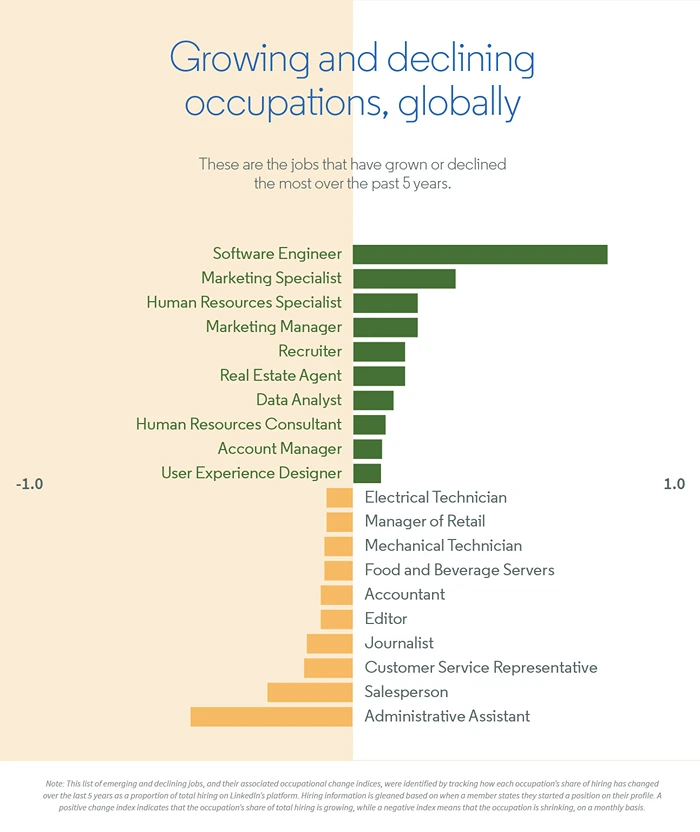
Image Source: We Forum
AI’s Secret: It’s Creating Jobs: Sure, cashier roles are declining, but have you seen the demand for AI ethicists? Or prompt engineers? These jobs didn’t exist five years ago. Now they’re paying six figures.
The Upskilling Wars: Factory workers aren’t just tightening bolts anymore. They’re programming robots and analyzing real-time production data. Companies like Siemens are pouring millions into micro-credentials—bite-sized training programs that teach workers to dance with machines.
The Trust Factor: Employees are wary. A recent Pew study found 52% of workers fear AI could make their roles obsolete. Transparency is key. When Home Depot introduced inventory robots, they didn’t hide the plan—they retrained cashiers to become tech supervisors.
What employers should do to stay relevant, as per the US job market report
Encourage employees to reap the benefits of using AI by organizing lunch-and-learn sessions or finding ways to improve existing processes. These sessions can prove to be immensely helpful in the long run when employees begin to increase productivity by working smart.
3. The Skills Crisis: Why Degrees Don’t Cut It Anymore
Here’s the paradox: Unemployment is low, but 63% of employers can’t find qualified candidates. Why? Because a four-year degree in business admin doesn’t teach you how to handle quantum computing—or Gen Z’s TikTok-fueled work ethic.
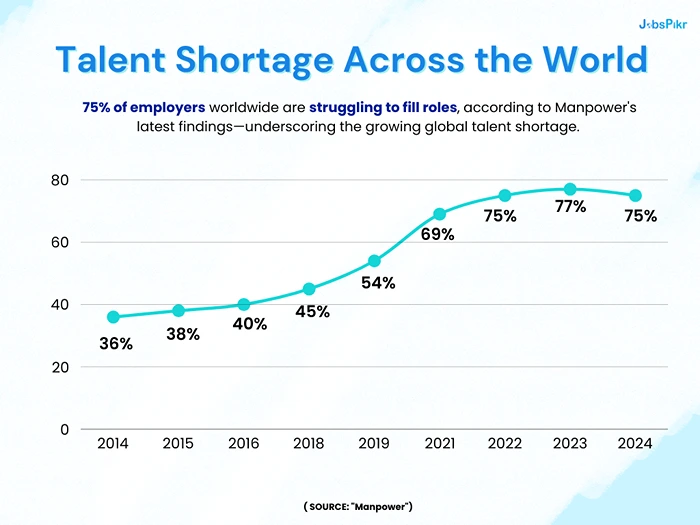
Skills Over Diplomas: Apple and Google now fill nearly half their IT roles with self-taught coders and bootcamp grads. Why? Because a kid who built an app in her dorm room often out-hustles someone with a generic CS degree.
The Rise of the “T-Shaped” Employee: Companies want specialists who can collaborate across fields. Think of a cybersecurity expert who understands behavioral psychology, or a sustainability manager fluent in data analytics.
Soft Skills Are the Hardest to Find: Emotional intelligence is crucial to run today’s workforce. With teams spanning five generations and six time zones, navigating office politics now requires the finesse of a person who understands how to deal with people with empathy and understanding.
What employers should do to stay relevant, as per the US job market report
Use tools like JobsPikr to understand what soft skills are in demand and what is important for your business. This data across geographies can help brands understand what’s missing from their current workforce’s skillset and the gaps they need to fill.
4. Gen Z: The Game Changers
Gen Z has proven to be a different generation from the past, especially in their work ethic.
Purpose or Bust: 78% would take a pay cut to work for a company fighting climate change. Patagonia’s “don’t buy this jacket” ads aren’t marketing—they’re talent magnets.
Mental Health Isn’t Optional: Burnout? Gen Z sees it as a dealbreaker. Companies like Calm and Headspace offer “mental health days,” therapy stipends, and apps that block emails after 6 PM.
The End of Corporate Ladders: Why climb one ladder when you can build your own? Gen Zers mix freelance gigs, part-time roles, and passion projects. One week, they’re coding for your startup; the next, they’re selling handmade pottery on Etsy.
What employers should do to stay relevant, as per the US job market report
Ditch the pizza parties. Offer tangible perks like student loan repayment or four-day workweeks. Create “passion projects” budgets, letting employees spend 10% of their time on social impact work.
5. The Gig Economy Gets a Makeover
Uber drivers were just the beginning. Now, people across the country want to spend their free time working on passion projects or working for themselves to bring in more money.
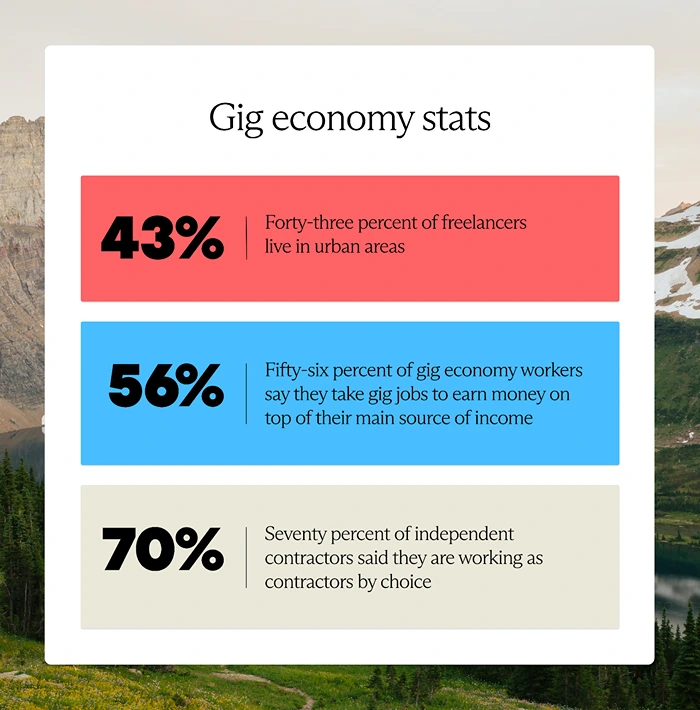
Image Source: Velocity Global
Freedom Over Stability: Gig workers trade benefits for control. A former corporate lawyer might consult for three startups while writing a novel.
Employers Save (But Risk Backlash): Hiring freelancers for projects avoids layoffs later. But, misclassify them as contractors? California’s AB5 law will slap you with fines.
Platforms Are the New HR: Upwork isn’t just for logo designs anymore. Sites like Toptal connect Fortune 500 companies with Ivy League-educated freelancers in hours.
What employers should do to stay relevant, as per the US job market report
Build a hybrid workforce strategy. Offer prorated health insurance for long-term freelancers. Use apps like Deel to handle global payroll without legal nightmares. And remember: Gig workers can become your best brand ambassadors—or your loudest critics.
6. DEI: From Checkbox to Business Strategy
Diversity initiatives used to mean awkward sensitivity trainings. Now? They’re profit drivers. Diverse companies earn 35% more revenue, and workers under 40 would rather be unemployed than work for a company that ignores DEI.
Radical Transparency: Colorado’s pay transparency laws forced companies to post salary ranges. The result? Women and minorities are finally calling out lowball offers.
Neurodiversity as a Superpower: Microsoft’s Autism Hiring Program isn’t charity—it’s a goldmine for detail-oriented coders. JPMorgan found that neurodivergent employees are 48% faster at certain tasks.
Allyship or Exit: Employees want action, not slogans. After George Floyd, companies like Ben & Jerry’s tied executive bonuses to DEI metrics. Don’t give out empty promises; instead, create policies that matter.
What employers should do to stay relevant, as per the US job market report
Audit your pay gaps—publicly. Create ERGs (Employee Resource Groups) with real budgets. Train managers to recognize microaggressions. And if your C-suite is still a monoculture? Fix it before Glassdoor does.
The Bottom Line of the US Job Market Report: Adapt or Die
The 2025 US job market isn’t for the faint of heart. Workers want flexibility, purpose, and a seat at the table. AI is reshaping roles faster than LinkedIn can update profiles. And companies that treat DEI as an afterthought? They’re becoming afterthoughts themselves.
This US job market report outlines the pitfalls of holding onto ancient ways of working that are not in tune with the requirements of the current generation.
If you’re looking for data to make such workforce decisions, try JobsPikr today.
